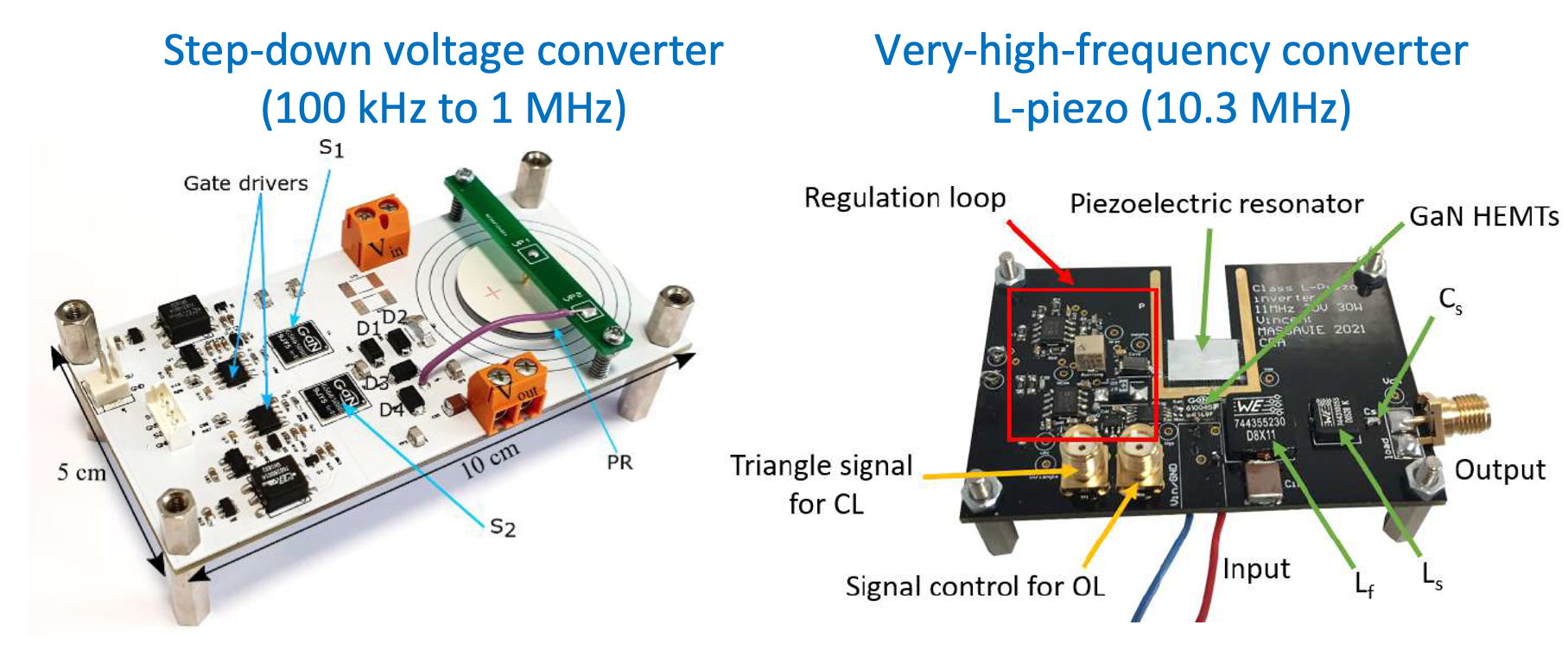Demand for smaller passive components strong on mobile device growth
One of the most common approaches to achieving more compact, efficient power electronics has been to target passive components. Shrinking power converters often means increasing the switching frequency to allow smaller energy storage elements. While it is true that inductors, a kind of passive component commonly used in power electronics, do get smaller as switching frequencies increase, you eventually hit a wall due to the components' magnetic properties and thermal management issues. Not to mention the fact that integrating efficient magnetic materials and coils in the Ampere range on chips is difficult—if not impossible—using today's fabrication processes. CEA-Leti has been driving advances in piezoelectric materials that could help solve this problem.
Moving from magnetic to mechanical energy storage not a straightforward swap
In addition to improved quality and coupling factors, piezoelectric materials eliminate the need for winding and core assembly, which means a more streamlined manufacturing process. Plus, their planar profile makes them ideal for low-profile applications in mobile devices. CEA-Leti and SATIE, a Université Paris Est Créteil-CNRS lab headed by Dr. François Costa, have been working together for the past several years on piezoelectric resonators (PRs) for energy storage, looking at ways to solve the new challenges created by using these tiny mechanical systems instead of conventional magnetic inductors in power converters. CEA-Leti's research with SATIE has led to the development of new topologies that fully exploit the potential of PRs for power conversion use cases.
« Looking for size reduction of power converters I found the idea to use piezoelectric material has an energy storage to replace inductors using specific adiabatic control cycles. This patented solution could revolutionize power electronics for many applications. The collaboration with SATIE was then a natural choice due to their past knowledge in piezo transformers » said Ghislain DESPESSE, research director from CEA-Leti.
“Our lab has been working on piezo transformers for a long time, but this original research on piezo resonators is new for us. It is particularly gratifying for me to have moved from simple observer, sitting on PhD dissertation juries at CEA-Leti, to a full-fledged partner in this exciting research," said Costa.
Innovative topologies for two novel piezo-enabled power converters
Most recently, our research produced three new converter types, one for step-down voltage DC/DC conversion, one for isolated DC/DC conversion, and one for very-high-frequency DC/AC conversion. Notably, the step-down voltage converter, which uses PZT (lead zirconate titanate, a common piezoelectric material), exhibited a power density increase as the operating frequency rose, achieving up to 100 W at 1 MHz. The very-high-frequency converter, which uses a φ2 VHF topology, was combined with a specific LNO (lithium niobate) resonator and ZVS (zero voltage switching) regulation loop. The device allowed us to demonstrate the piezoelectric material's operation at 20.6 MHz. Driving is another challenge that must still be addressed. We also modelled and generalized the piezoelectric conversion principle to step-up conversion, step-down conversion, and high/low conversion ratios, something that is vital to the development of generic control loops for high-frequency operation. Comparing the piezoelectric material to an inductor operating at the same power level revealed a substantial volume gain of more than sevenfold, underlining the transformative potential of an innovation born from a particularly fruitful partnership with an academic research lab.
Costa said, “CEA-Leti has manpower and R&D equipment that goes beyond what most university labs have access to, with resources you know will be around for a long time. I am proud of the world-first we achieved together."
